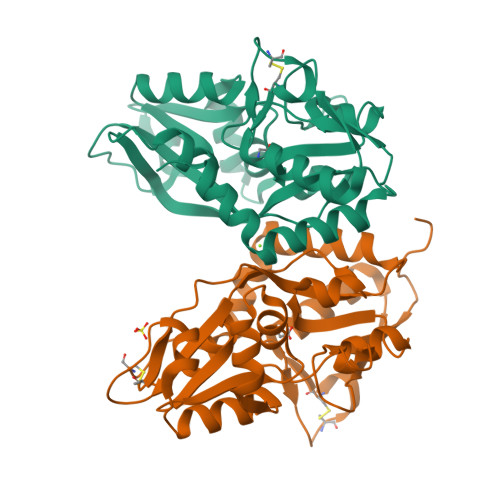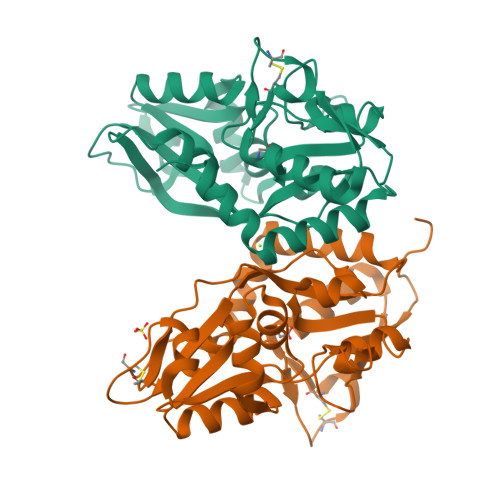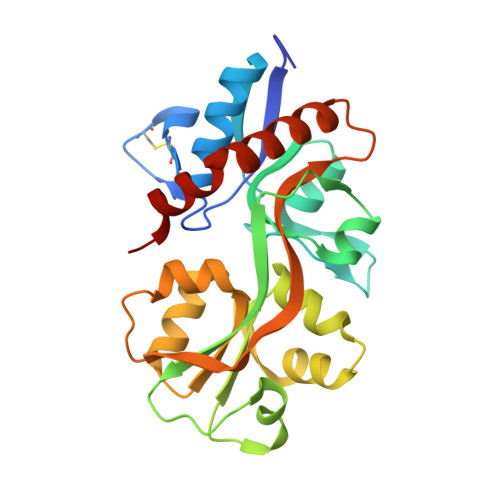Molecular lock regulates binding of glycine to a primitive NMDA receptor.
Yu, A., Alberstein, R., Thomas, A., Zimmet, A., Grey, R., Mayer, M.L., Lau, A.Y.(2016) Proc Natl Acad Sci U S A 113: E6786-E6795
- PubMed: 27791085
- DOI: https://doi.org/10.1073/pnas.1607010113
- Primary Citation of Related Structures:
5CMB, 5CMC - PubMed Abstract:
The earliest metazoan ancestors of humans include the ctenophore Mnemiopsis leidyi The genome of this comb jelly encodes homologs of vertebrate ionotropic glutamate receptors (iGluRs) that are distantly related to glycine-activated NMDA receptors and that bind glycine with unusually high affinity. Using ligand-binding domain (LBD) mutants for electrophysiological analysis, we demonstrate that perturbing a ctenophore-specific interdomain Arg-Glu salt bridge that is notably absent from vertebrate AMPA, kainate, and NMDA iGluRs greatly increases the rate of recovery from desensitization, while biochemical analysis reveals a large decrease in affinity for glycine. X-ray crystallographic analysis details rearrangements in the binding pocket stemming from the mutations, and molecular dynamics simulations suggest that the interdomain salt bridge acts as a steric barrier regulating ligand binding and that the free energy required to access open conformations in the glycine-bound LBD is largely responsible for differences in ligand affinity among the LBD variants.
Organizational Affiliation:
Department of Biophysics and Biophysical Chemistry, The Johns Hopkins University School of Medicine, Baltimore, MD 21205.



















